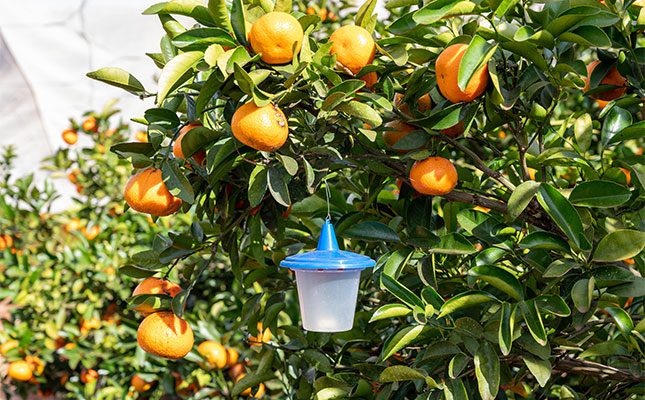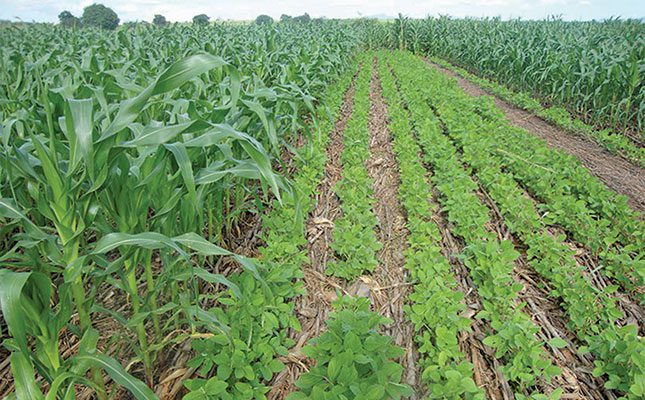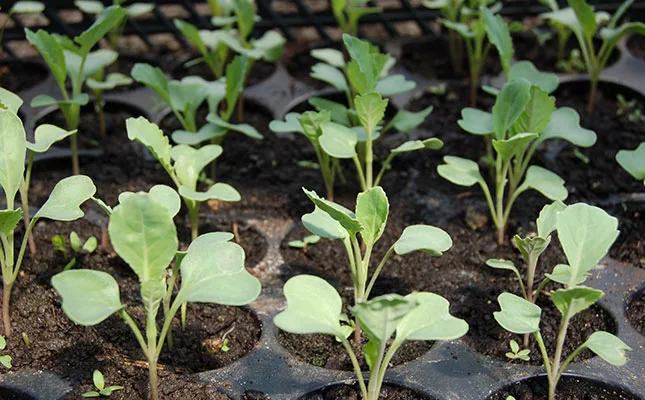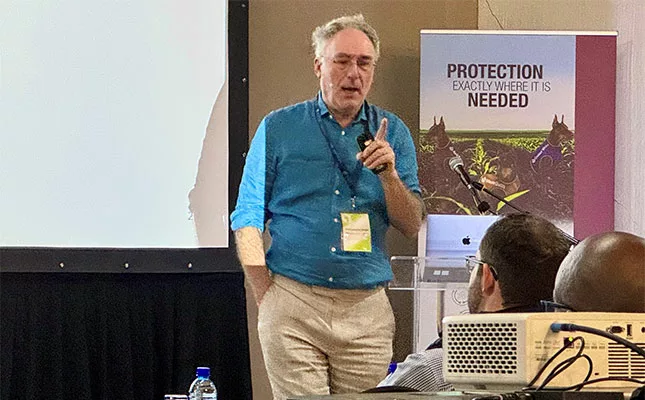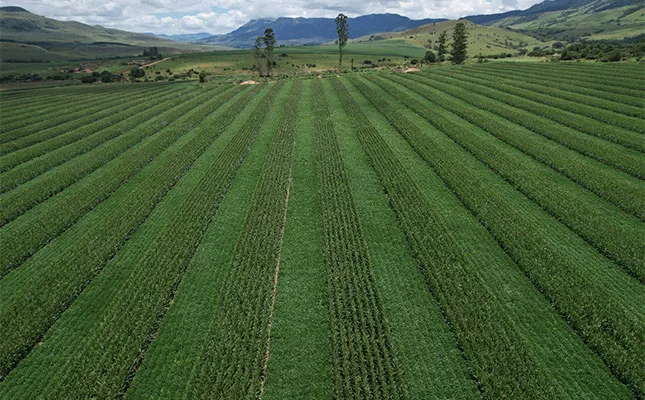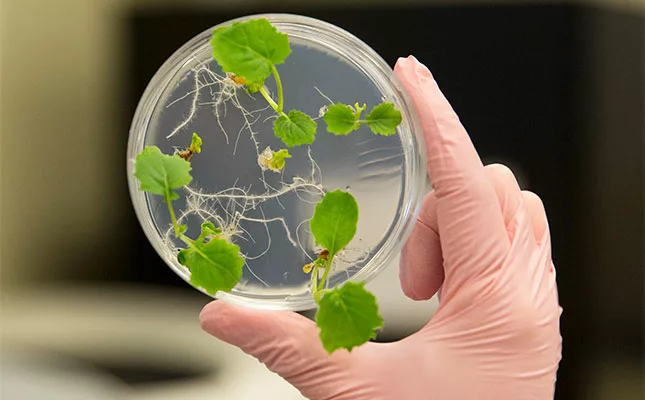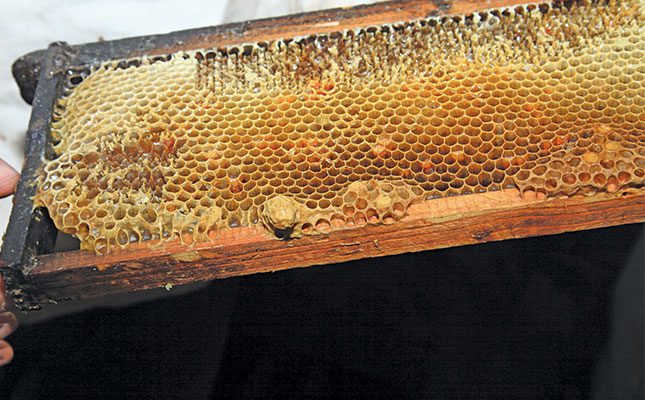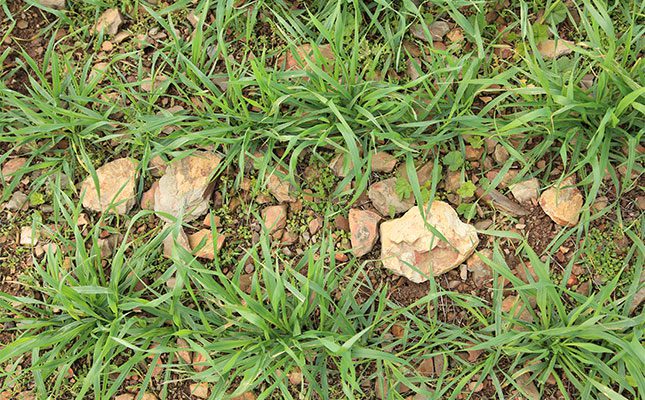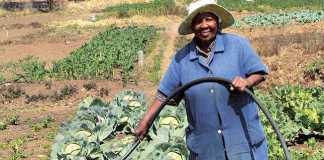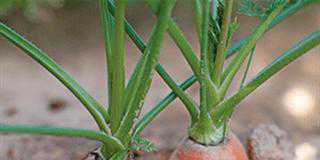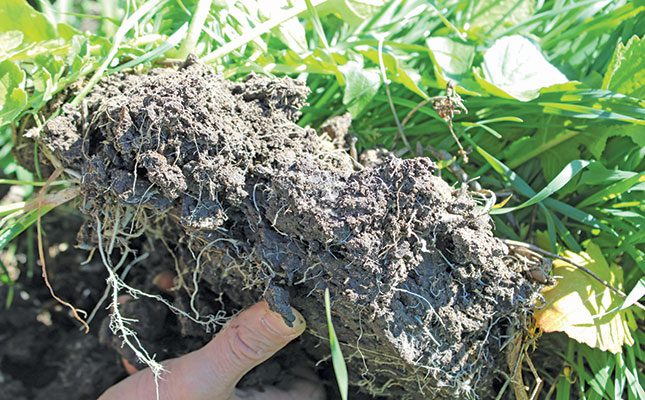
Photo: Lindi Botha
Regenerative agricultural practices hold many benefits for farmers and the environment as it creates a healthy, resilient system where water and nutrients are fully contained in the soil, providing a stable food source to plants.
The key principles of regenerative farming rest on enabling plants to form a symbiotic relationship with soil microbes. Plants release compounds from their roots that feed the soil microbes, which in turn then supply the plants with essential nutrients.
Often, nutrients that are in a form plants are unable to absorb are broken down into an easily absorbable form by the microbes, making them essential to proper plant nutrition.
These processes are however interrupted by synthetic inputs like fertilisers and pesticides.
Plants stop producing root exudates and instead absorb the artificial fertiliser. Soil microbes lose their source of food, and plants become reliant on fertiliser for growth. Foregoing artificial inputs is in theory the solution, saving farmers input costs while promoting a natural system. However, the state of soils on most farms is so poor that this cycle cannot sustain itself.
Farmers embarking on the regenerative path therefore spend much effort on building soil health though a range of practices, like adding compost, planting cover crops and allowing livestock to graze crop residues as their manure stimulates microbe populations.
This is a long journey, and soil can take years to reach its optimum stage. In the meantime, farmers face a critical problem: lower yields and reduced income.
Anke Kwast, vice president for Yara’s Climate Neutral Roadmap, says this is the biggest barrier to greater incorporation of regenerative agricultural practices.
“Over the short term, it’s unattractive for farmers. The risk and cost of the transition are key challenges that need to be addressed by all players across the food value chain before we will see the transition to regenerative farming.”
The solution, agronomists believe, is a phased approach where fertilisers are still used to ensure stable yields, but quantities are reduced as soil health improves.
Alex Platt, business development manager at RegenZ, believes it’s beneficial for farmers looking to adopt regenerative farming not to take an all-or-nothing stance on their principles, but to focus holistically on what’s best for the farm.
“Every farm is unique and requires a customised approach to help it thrive.”
James Locke, agronomist at the Noble Research Institute, adds that while the goal of regenerative agriculture is to rebuild soil biology and reduce the need for fertiliser, the latter still has its place when used judiciously.
“While fertiliser’s role can be debated, it cannot be denied that plants require adequate nutrition to meet production goals, especially in the first two to three years of the regenerative agriculture journey if the soils are degraded.”
How much is enough?
The guiding principle in a regenerative system is to ensure that the fertiliser provides a production benefit that exceeds any temporary negative impact on soil biology. Locke emphasises that if a fertiliser application will cause a long-term negative impact on the soil’s biology, it should not have a role in regenerative agriculture.
“Our ultimate challenge is to supply plant nutrition by leveraging the soil’s natural biology. During this transition, we want to apply only enough fertility, especially nitrogen, to kick-start plant growth but not impede developing soil biology. Eventually, a healthy, diverse soil biology develops that can provide adequate nutrient cycling.”
While healthy soils have the ability to provide crops with nutrients, Kwast notes that nutrients removed from a field when a crop is harvested often far exceeds what the earth is able to replace on its own.
“Each harvest contains plant nutrients such as nitrogen, phosphorus and potassium, which are removed from the agricultural fields and used for human and animal nutrition through the plants harvested.
Only a fraction of these nutrients are recycled back to agricultural fields in organic material such as manure or compost. If the predominant non-recycled portion is not replaced by fertiliser, agricultural soils will be depleted of plant nutrients, leading to declining yields and soil fertility.
“The key is to apply exactly what is needed, when it is needed. Precision agriculture tools therefore play an important role in ensuring the crop receives balanced and precise nutrition. This includes nutrient management systems and tools designed to achieve better fertiliser use efficiency, where fertiliser demand is calculated based on soil analysis, yield expectations, desired crop quality and climate.”
Kwast believes that used in the right quantities and forms, fertiliser ensures that a sufficient quantity and quality of food is produced, and natural land is safeguarded from being converted to agriculture to make up for lost yields.
Test, don’t guess
Soil testing plays a crucial role in regenerative agriculture, not just to show farmers whether their interventions are working, but to ensure crops get the right amount of nutrition. Since a far greater number of factors are taken into account in a regenerative farming system, the testing process requires a broader method.
Locke advocates for the Haney soil test, since it considers the biological activity and estimates total inorganic and organic plant-available nutrients in the soil.
The Haney soil test analyses several biological aspects of soils, including soil respiration over 24 hours to indicate the level of microbial activity; water extractable organic carbon and nitrogen that is available to crops and microbes; and the H3A extract, which uses three naturally occurring organic acids that mimic the rhizosphere-altering action of plant roots dissolving soil minerals and liberating soil phosphorus.
The test result points out total available carbon, nitrogen, phosphorus and potassium (and other secondary and micronutrients) and provides a microbial activity index and several useful ratios as well.
Farmers can use the Haney tests to indicate the amount of fertiliser actually needed to meet yield goals based on total available nutrients (instead of just based on the inorganic nutrient availability as in a conventional soil test), especially when transitioning to regenerative management.
The cover crop mixtures can then be determined to meet diversity and soil health objectives, and additional management practices that could be applied to meet regenerative goals for the field or pasture can be decided on.
Another tool is the nitrogen use efficiency (NUE) calculation, which is a key metric in sustainable agriculture and environmental science that indicates how effectively plants and crops utilise nitrogen from sources such as mineral and organic fertilisers, biological nitrogen fixation, and deposition of atmospheric nitrogen.
Kwast explains that in its simplest form, NUE is all nitrogen output (harvested crop), divided by nitrogen input, multiplied by 100, and expressed as a percentage.
“Generally, the optimum NUE range is 75% to 90%, ideally measured over a full crop rotation. The range however will vary depending on the crop and location. The objective is that the plant takes up the optimum amount of nitrogen for a targeted yield, leaving the soil neither depleted nor oversaturated of nitrogen.
“NUE is therefore a recognised indicator in the transition to regenerative agriculture.” She adds that where there is overuse, the goal should be to optimise nitrogen applications to reduce the risk of losses while ensuring adequate yields.
“Where there is underuse, more and better-targeted crop nutrition can help to close yield gaps, support soil health and optimise the use of agricultural land.”
Organic content
Compost plays a significant role in regenerative agriculture. Composting is a process that transforms biomass into food for the soil, improving plant growth, health and vigour. Any plant material can be composted. Decaying plant material is consumed by worms, bugs and beneficial microbes, which exude biomass as a by-product.
When worked into the soil, composted material adds nutrients and reduces compaction, which allows water to penetrate deeper into the ground. By increasing compost applications, the route to optimum soil health is sped up.
Locke advises that ideally, farmers should incorporate organic matter into the soil profile for at least 15cm, with the optimal concentration ranging from 3% to 5% in the top earth layers.
Compost tea is also a useful addition that supplies micro-organisms and soluble nutrients vital for plant growth. Locke notes that the switch to regenerative agriculture should be a gradual conversion.
“It should be well planned, founded on good production principles, with the focus on soil health.”
Not neglecting yield and income generation, science must be used as a guideline to calibrate decisions in line with the needs of the soil and plant.
Finding the balance between inputs that feed the soil, and those the boost yield is a vital step to make a sustainable and successful conversion to regenerative agriculture.
Email Lindi Botha at [email protected].

